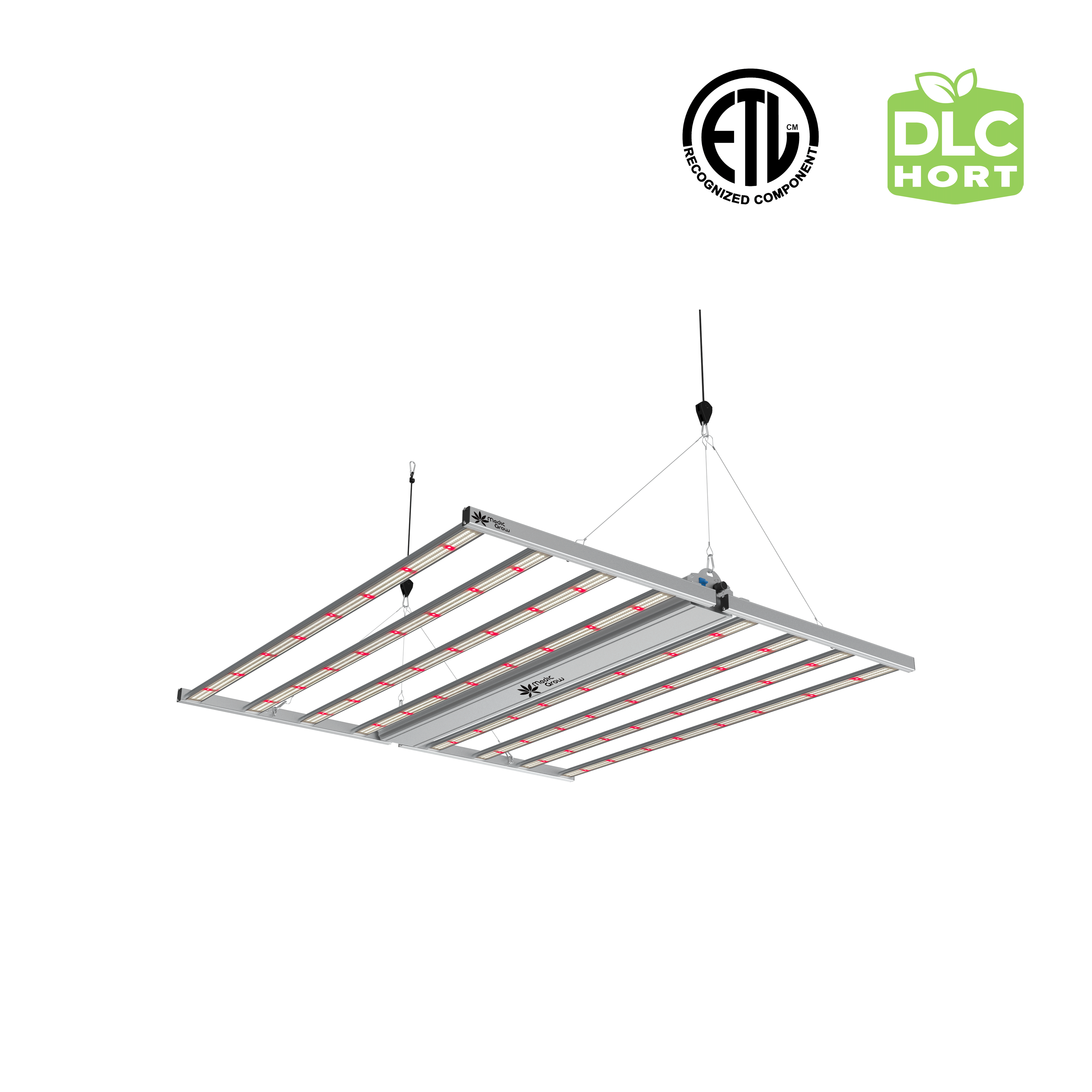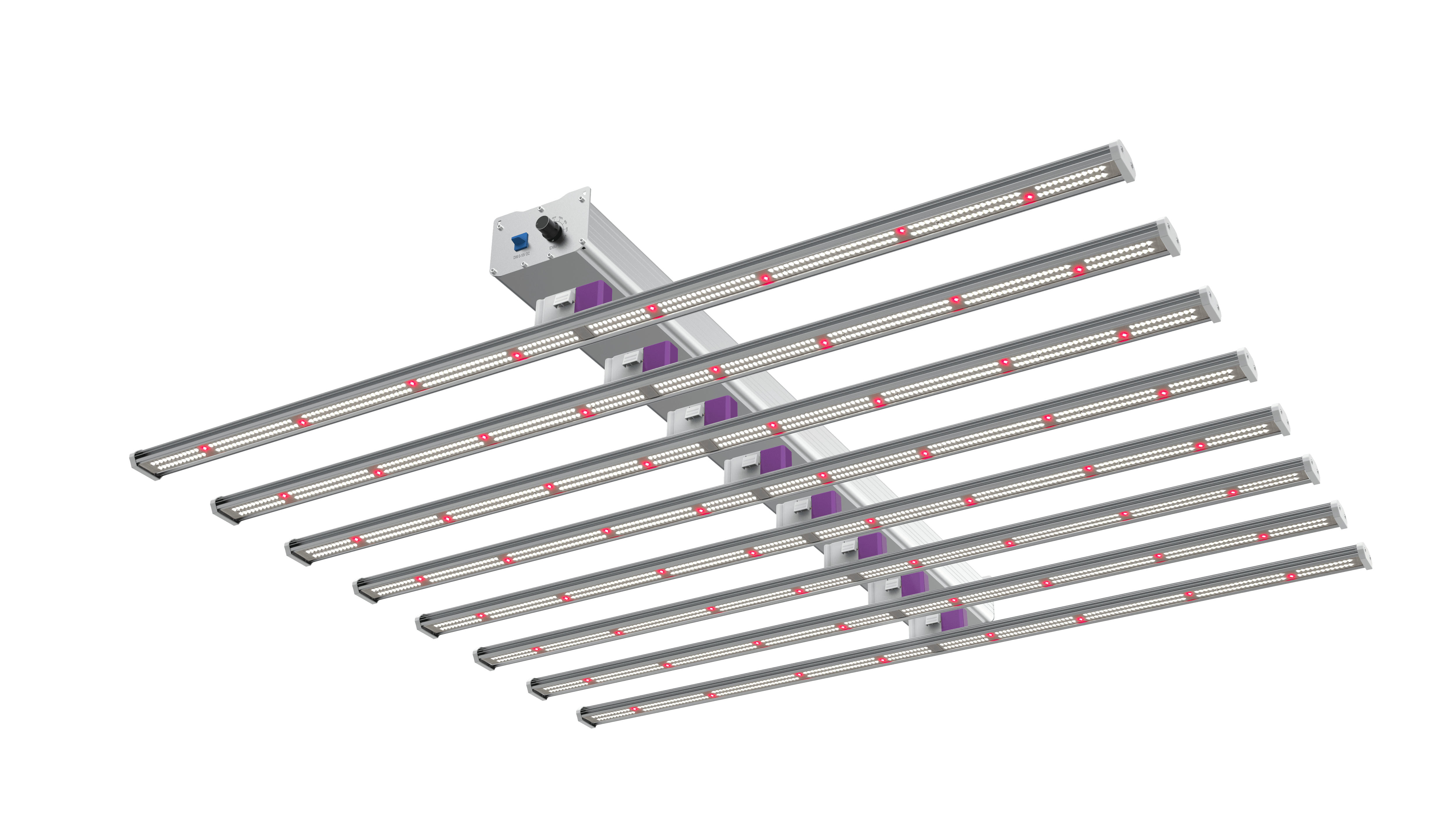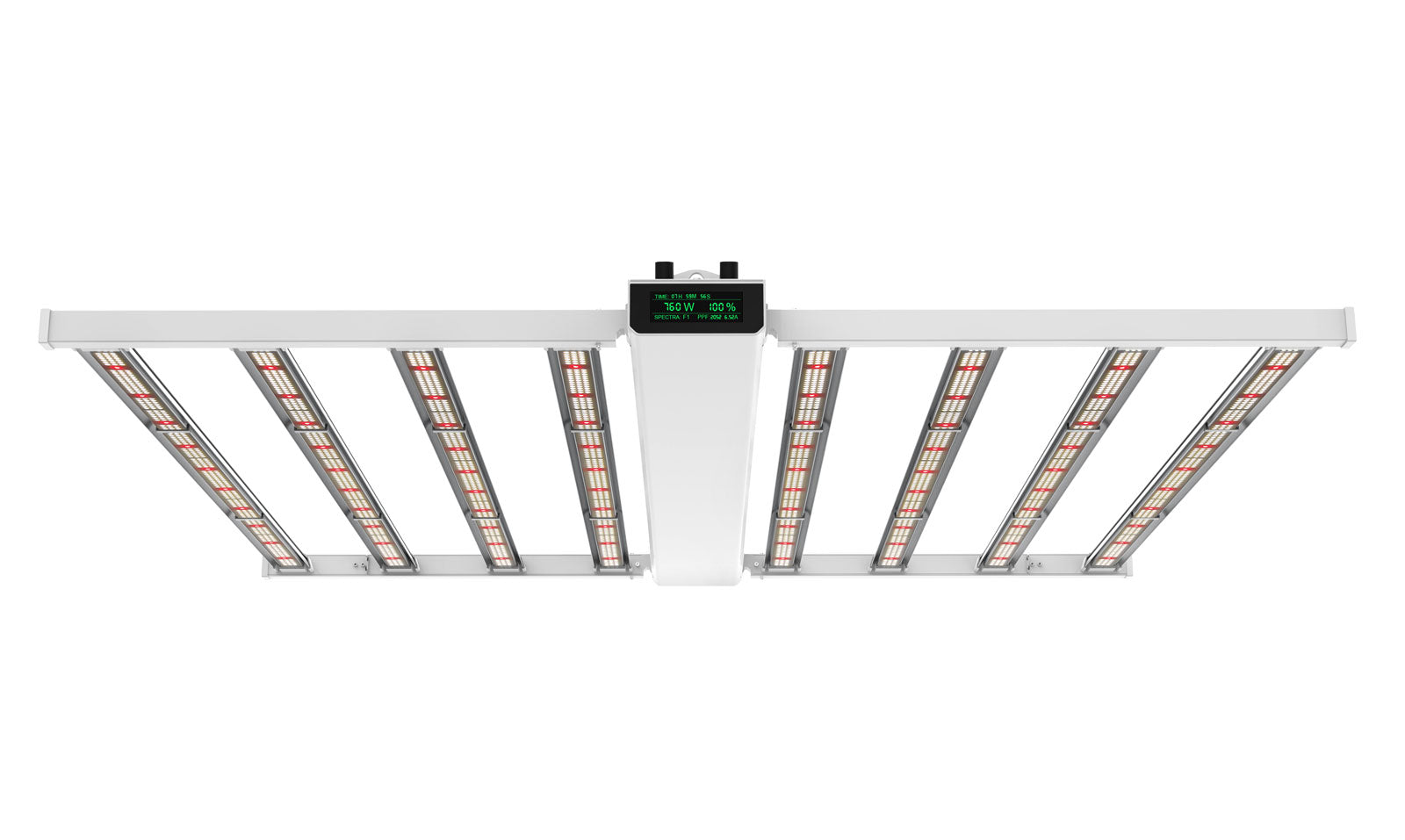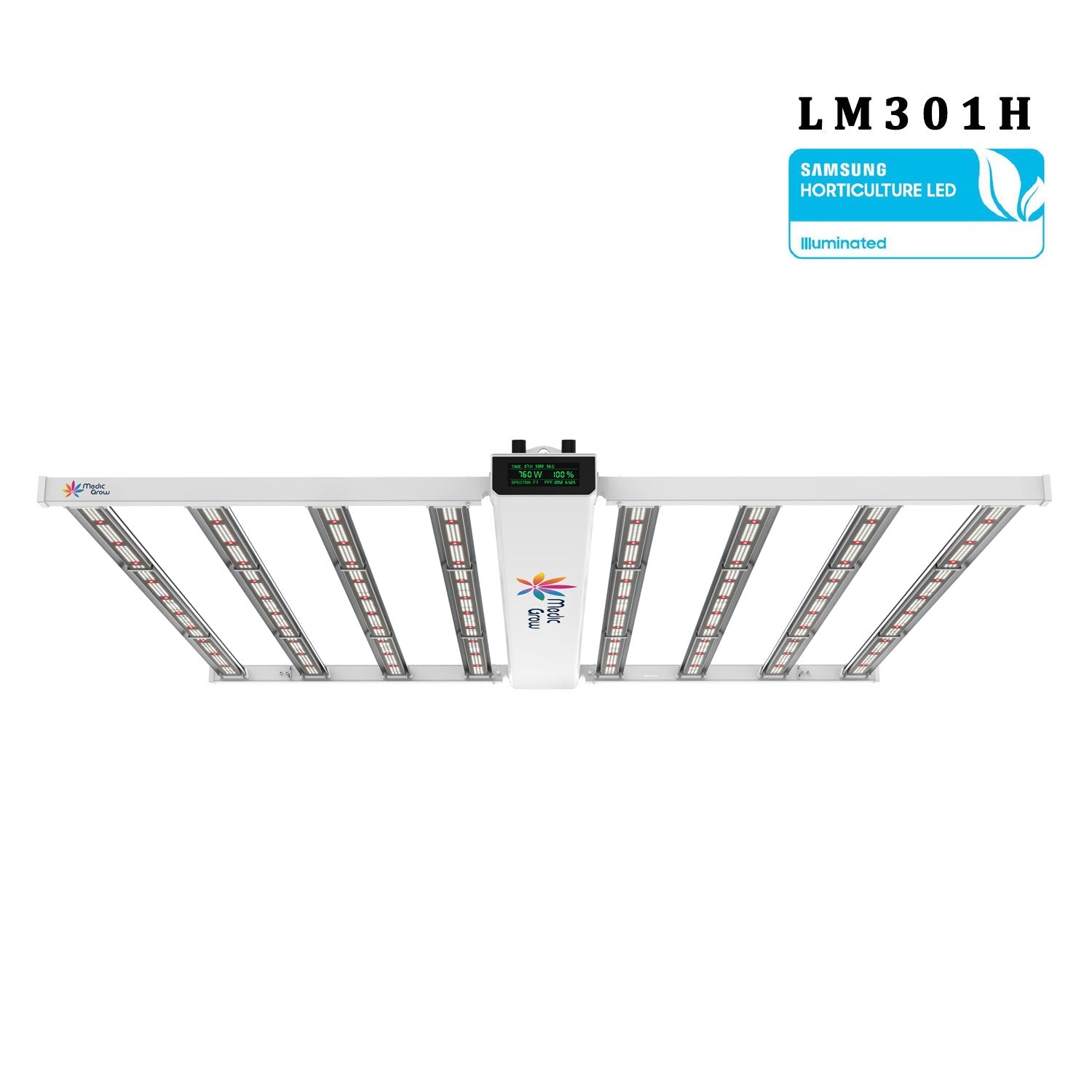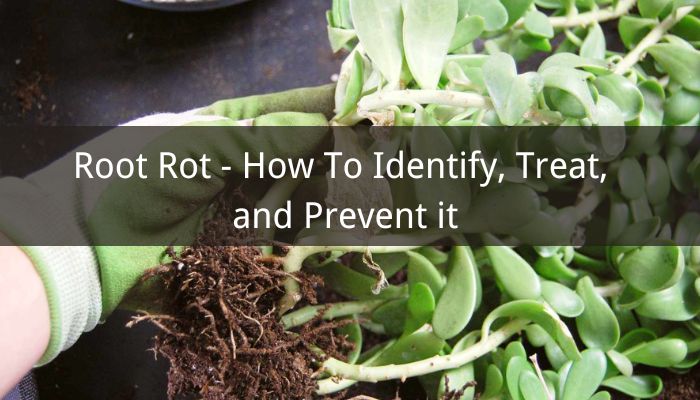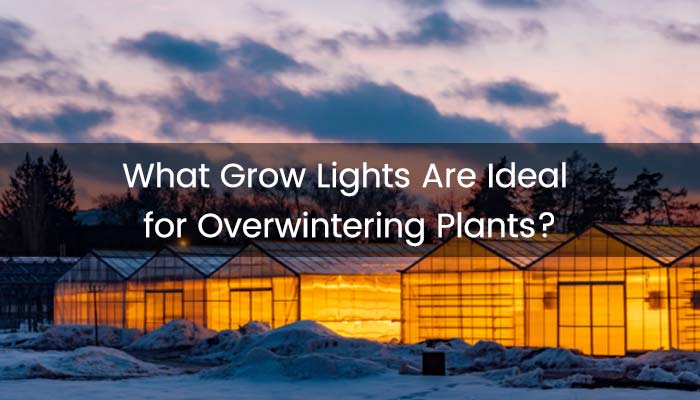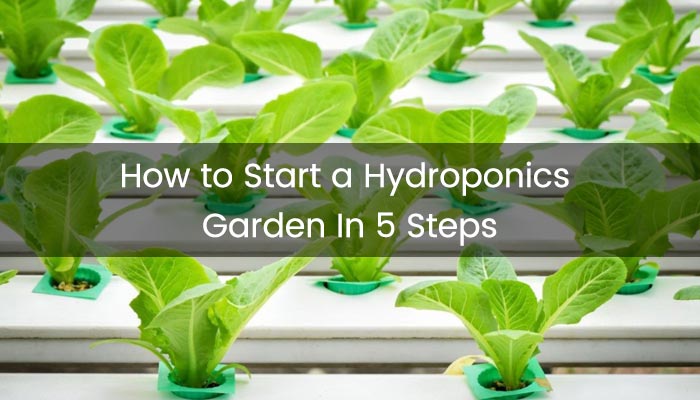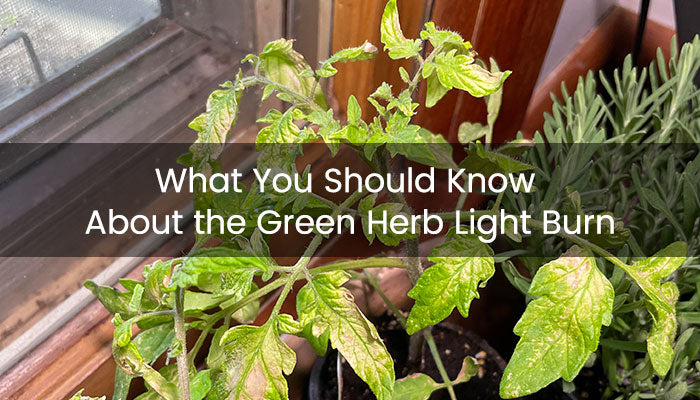
What You Should Know About the Green Herb Light Burn
Indoor growers need to be careful while using high-intensity growing lights. Too much light stress can lead to permanent green herb light burns. The problem is that plants can hold onto a specific amount of light. After that, the leaves will begin to lose their greenish side (turning yellow).
As mentioned earlier, this light bleaching usually occurs in indoor gardening, where plants absorb artificial light to thrive. If you take preventative measures, you can secure the plant's health or life. In this article, we’ll further explain green herb light burns at different stages of green herb growth. Believe us, this post is worth reading for your plant’s sake.
Main Content:
- 1. What is the Green Herb Light Burn and Light Stress?
- 2. Why Does Green Herb Experience Light Bleaching?
- 3. How to Solve Green Herb Light Burn?
- 4. Conclusion
- 5. FAQs Related to Green Herb Light Burn
What is the Green Herb Light Burn and Light Stress?
Whether artificial light or sunlight, lighting has been the most significant factor in your plant's health, but it may cause the green herb light burn. It doesn’t matter if you are growing green herbs or not; plants need light to process photosynthesis.
In the indoor growing environment, artificial or UV grow lights are the only source for plants to absorb carbon dioxide CO2 and water. The only and most common problem that every indoor grower may face is the light burn and light stress of green herbs.
green herb light burn occurs when plants receive excessive light intensity or heat from grow lights, leading to symptoms such as leaf curling, tip burn, and bleaching. However, you can overcome this problem by taking precautions and knowing the causes of light burns in green herbs.
To prevent and treat green herb light burn, adjust the light distance, reduce the intensity, ensure proper ventilation, and monitor plant responses regularly.

Solving the light burn issue will not only ensure the safety of plants but also help you to regain the high potency bubbles. So how would you know if your plants are going through a light burn or light stress? The only way to save plants is to understand what is causing your plant to burn; it could be the light burn or nutrient deficiency.
The only symptom of green herb light burn or light stress is turning green leaves into yellow from the top. It only happens to those leaves that are under the grow lights. On the other hand, green herb nutrient deficiency follows many symptoms such as yellow leaves, yellow or brown edges, holes in leaves, purple or red tone of leaves, and yellow lining of leaves veins.
Why Does Green Herb Experience Light Bleaching?
green herb light burn is often called light bleaching because it shows the same signs you get after bleaching (white/brownish color.) Nowadays, it’s more common in indoor cultivators as many are switching to high-intensity growing lights like Medicgrow NEO grow lights 1000 watt. If you don't use them properly, they can cause light bleaching.

Image source:https://www.reddit.com
To avoid light burn, use an LED grow light for low intensity, such as Medicgrow 150-watt grow light for house plants. LED grow lights emit less heat than fluorescent or HID bulbs. But that doesn’t mean you should also put them too close to the plants. Always use optimal distance while placing LED grow lights above your green herb plants.
The light burn leaves influence chlorophyll. As a result, it stops the process of photosynthesis, which turns the green leaves into yellow. The symptoms of light stress and light burn can vary during different stages of green herb growth. Let’s have a closer look at the symptoms of mild burns and mild stress at different phases of green herb growth:
Green Herb Seedlings Stages
Apart from other growth stages, the green herb seedling stage is the most delicate phase of your plant’s life as it decides the future of your green herb plant. At this stage of the green herb growth cycle, the plant is more hazardous to light burn and light stress.
The very first leaf coming out from the seed is also capable of absorbing light and transforming it into food. The first leaf that emerges from soil or seed is also known as dicotyledon.
At this point, your plants are too sensitive to light. If it’s too far, the emerging plant will grow fragile and drop over since its truck/stem can’t handle its size. The LED grow light shouldn’t be too adjacent to the plant as it can cause light burn to seedlings. The light should be optimal where the seedlings get considerable heat.
If you aren’t sure or experienced enough to use grow lights for indoor plants, you can pass the seedling stage in little sunlight on your porch. Remember, seedlings don’t require intensive lights.
Green Herb Vegetative Stage
The vegetative stage for green herbs is next after the seedling stage, where little fan leaves and leaflets turn into big, mature leaves. All the pressure to grow faster and healthier is put on stems and leaves at this stage.
The entire plant's focus is to grow bigger and thicker. Unlike the seedling stage, the risk of green herb light burn is off the chart in the vegetative stage. But that doesn’t mean the plant won’t get any light stress or light burn. Though they perform well in intense light, they need protection from high-intensity light.
The green herb vegetative stage is about maturing and getting stronger as the day passes. The photosynthesis process becomes more active in the vegetative phase, giving plants more growth. It requires more light and heat to increase the process of photosynthesis. You can now put LED grow lights closer to the plant’s canopy.
While increasing light intensity, you must be more active and regularly monitor your plants' progress. If the leaves start to turn yellow or there are any bleaching signs, place the grow light a bit further back, so the plant doesn't get the light burn or light stress.
green herb Flowering Stage
The green herb flowering stage is the last and most crucial stage of green herb growth. All of the hard work you’ve done depends on this stage. If this fails, your whole cultivation is nothing, just a waste. Because harvest takes place in this stage.
Here’s the exciting part, the flowering stage requires less light and heat than the vegetative stage. The color of cola flowers will determine whether it’s ready to harvest or not. If somehow, the flowering stage gets green herb light stress, the color of the flowers turns white, and the potency will be gently removed from the flowers. All of your efforts to harvest a beautiful crop will go in vain.
That’s why it’s essential to put the lights away at some distance so the excessive heat of grow lights cannot be able to reach the flower buds.
How to Solve Green Herb Light Burn?
Once a famous Dutch philosopher said, “Prevention is better than cure.” Your priority must be the prevention of green herb light burn before it causes harm to your cultivation. Because once anything gets infected, it won’t bring the original one back. That’s why you should take preventive measures to control the temperature throughout the growing stages.
Keep in check the following measures to stay away from the green herb light burn leaves situation:
- As you know, light-stress green herb is caused by excessive growing light toward plants. To check the intensity of full spectrum grow lights, place your hand under the light just above the canopy to see if it’s causing any discomfort or irritating your skin. If you find it too hot, your plant is also receiving that heat from lights that aren’t good for it. In this scenario, the grow lights should be pushed back further so your plants get the optimal amount of heat.
- If you’ve changed the growing area or some plants, give them the same amount of light as in the previous one. Otherwise, they will start showing the side effects of light-stress green herb.
- Grow lights play an essential role in indoor gardening. If you are using fluorescent or HID bulbs, make sure to keep a close eye on the temperature of your growing area because these bulbs emit a lot of heat. If you are too concerned with the lights, always go with the LED grow light. Dimmable LED grow lights like Medicgrow 800W LED grow light will minimize the chance of getting your plants’ light burned and light stress.
- Always use the LUX or PAR meter to determine the intensity of heat your plants are getting from lights. When your plants are in the vegetative stage, the most favorable level of lux is anything between 30,000 to 70,000 lux/m2. And when the plant is in the flowering stage, it should be around 50,000 to 90,000 lux/m2. On the other hand, the recommended PAR levels the favorable growth are 200 to 400 PPFD for seedlings, 400 to 600 PPFD for vegetative, and 600 to 900 PPFD for the flowering phase.
- Lastly, if growing in a congested area, consider slow-stress training at the beginning to prevent light burn or light stress from your indoor growing.
There’s no repairing of burnt leaves unless you prevent them from happening. green herb light burn is not a virus or mold-like disease. It’s entirely in your hands to prevent it from happening. All you have to do is install LED grow lights for your setup and watch out for any rising or descending temperatures.
Conclusion
Indoor gardening is not only for experienced growers but also for beginners as long as following our growing guides. Preventing light bleaching is crucial and can be achieved by using dimmable grow lights, which are better for cultivating healthy green herb plants. For more information about growing green herb, visit our official website.
Related Posts:
Male vs. Female green herb Plant
How Much Can One green herb Make?
2024 Best Grow Lights for Green Herb
FAQs Related to Green Herb Light Burn
1. Will green herb Recover from Light Burn?
Green herb plants can recover from light burns if corrective actions are taken promptly. To aid recovery, move the grow lights further away from the green herb plants and ensure optimal environmental conditions, such as temperature and humidity, are maintained.
Additionally, trim severely damaged green herb plant leaves to help the green herb plant focus on healthier growth and avoid over-fertilization. With proper care and monitoring, green herb plants can bounce back and continue to thrive.
2. What Are Plant Heat Stress Symptoms?
Plant heat stress occurs when plants are exposed to high temperatures for prolonged periods, leading to several adverse effects. Common symptoms include wilting, leaf scorching, leaf curling, yellowing, and stunted growth.
High temperatures can also cause plants to drop flowers and immature fruits, reducing overall yield and productivity. To mitigate heat stress, it's crucial to ensure proper watering, provide shades like growing tents during peak heat times, and maintain adequate ventilation and humidity levels.
3. Can Plants Get Too Much Light?
Plants can't get too much light, which can lead to light stress or light burns. When exposed to excessive light intensity, plants may exhibit symptoms like yellowing or browning of leaves, leaf curling, and bleaching.
These symptoms occur because too much light can cause photosynthesis to exceed the plant's capacity to process the light, leading to damage.
To prevent light stress, it is important to adjust the distance between grow lights and plants, monitor light intensity, and use grow tent kits to ensure other environmental conditions such as temperature and humidity are optimal.
Featured Products
Blog Posts
Contact Us with Any Idea!
- Choosing a selection results in a full page refresh.
!













